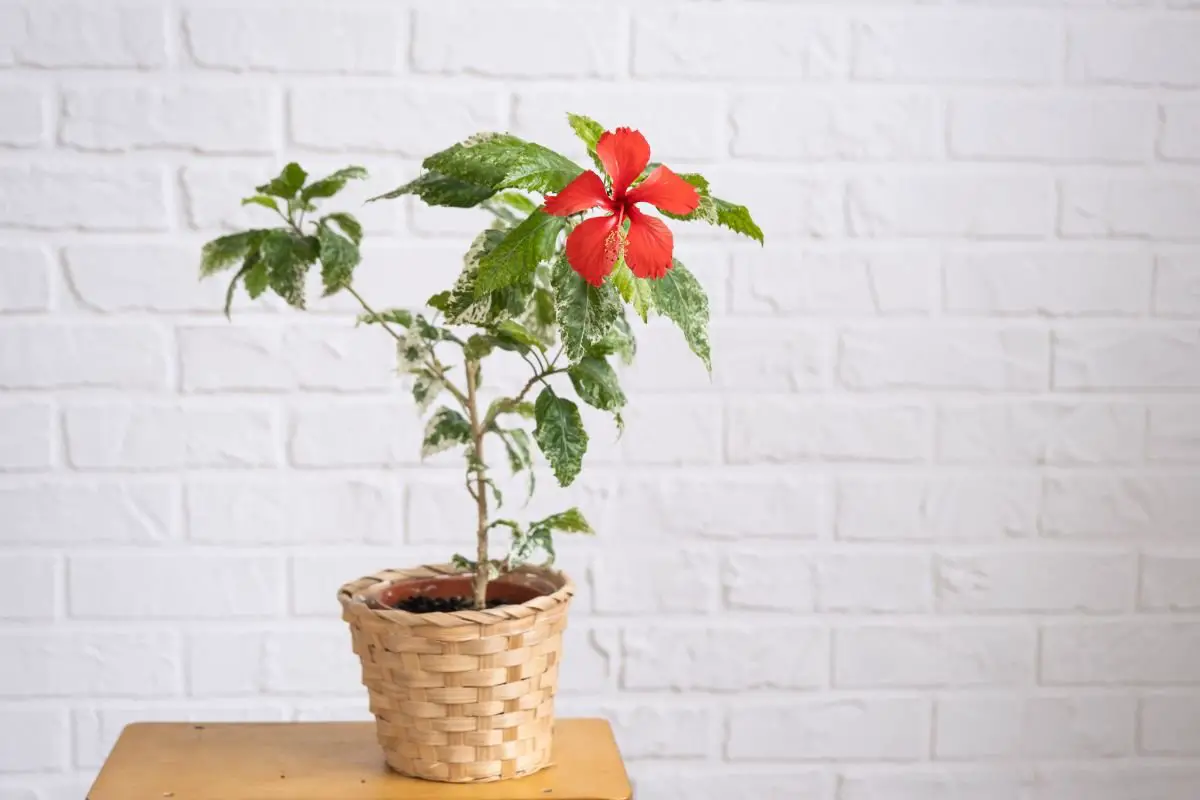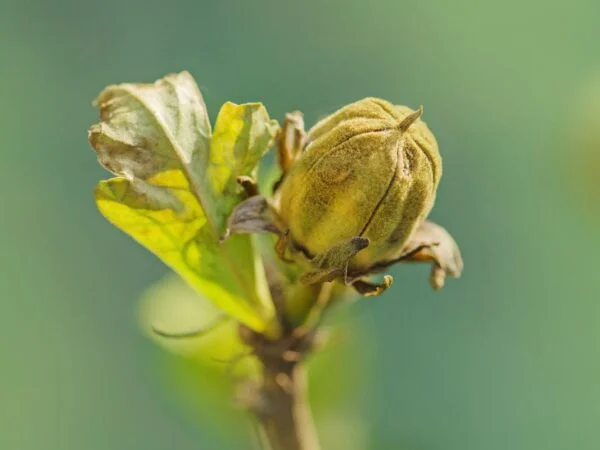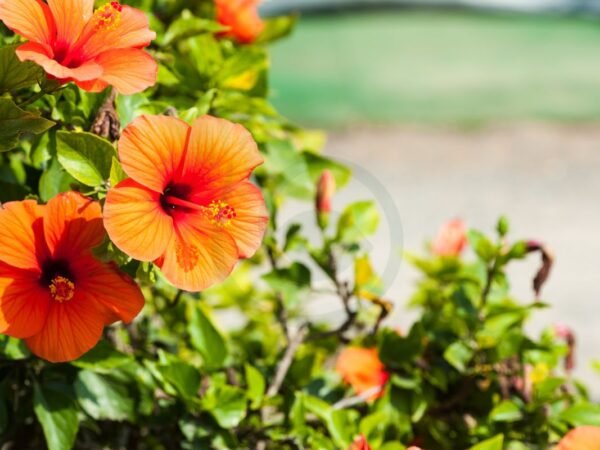Did you know that growing hibiscuses in potted plants is not only possible but also incredibly rewarding? Whether you have limited space or simply prefer container gardening, this vibrant and tropical plant can thrive in pots with the right care and attention.
Wondering about the best practices for planting, watering, and caring for your potted hibiscuses? Stay tuned as we delve into expert tips and tricks to ensure your hibiscus blooms beautifully in a container garden setting. Discover how to create an ideal environment for your hibiscus to flourish and showcase its stunning flowers all year round.
Key Takeaways
- Choose the Right Container: Opt for a container that provides ample space for root growth and has drainage holes to prevent waterlogging.
- Provide Adequate Light: Place your hibiscus in a location that receives at least 6 hours of sunlight daily for optimal growth.
- Select Well-Draining Soil: Use a well-draining potting mix to ensure proper water drainage and prevent root rot.
- Feed Regularly: Fertilize your hibiscus every 4-6 weeks during the growing season with a balanced fertilizer to promote healthy blooms.
- Plant Carefully: When planting, position the hibiscus at the same depth as it was in its previous container and water thoroughly.
- Choose Suitable Varieties: Select hibiscus varieties that are well-suited for container growth, such as dwarf or compact cultivars.
Choosing Containers
Size Matters
Choose a pot that is 2-3 times larger than the hibiscus root ball. Consider the mature size of the hibiscus plant when selecting the pot. Ensure the pot has enough room for root growth and stability.
Material Benefits
Opt for lightweight materials like plastic or fiberglass for easy mobility. Consider terracotta pots for their breathability and insulation properties. Choose a durable material that can withstand outdoor conditions.
Drainage Importance
Use pots with adequate drainage holes to prevent waterlogging. Elevate the pot slightly to ensure proper drainage. Avoid pots without drainage holes to prevent root rot.
Light Requirements
Ideal Exposure
Place the hibiscus in a spot with full sun exposure to promote healthy growth and vibrant blooms. Shield the plant from strong winds that can harm its delicate flowers. Ensure consistent sunlight all day long for the best results.
Sunlight Hours
Aim for at least 6 hours of direct sunlight daily to ensure your hibiscus thrives. Monitor the sun exposure levels throughout the day to maintain optimal conditions. Adjust the pot's placement as needed to maximize sunlight absorption.
Soil Selection
Optimal Mix
- Use a well-draining potting mix with peat moss and perlite for hibiscus plants in pots.
- Avoid heavy soils to prevent waterlogged roots, which can harm the plant.
- Enhance soil structure and nutrient retention by incorporating organic matter into the mix.
pH Levels
- Maintain a slightly acidic soil pH ranging from 6.0 to 6.5 for healthy hibiscus growth.
- Regularly test the soil pH to ensure it stays within the optimal range for the plant.
- Adjust the pH levels using suitable amendments if necessary to meet the plant's requirements.
Fertilization Needs
Nutrient Types
Provide a balanced fertilizer with equal parts nitrogen, phosphorus, and potassium. Opt for slow-release fertilizers to ensure a steady supply of nutrients over time. Supplement the hibiscus plant with micronutrients like iron and magnesium for robust and healthy growth.
- Balanced fertilizer: nitrogen, phosphorus, potassium in equal parts
- Slow-release fertilizers: ensures consistent nutrient availability
- Micronutrients: iron and magnesium for healthy growth
Application Frequency
Fertilize hibiscus plants every 4-6 weeks throughout the growing season. Adjust the frequency based on the plant's growth rate and specific nutrient requirements. Be cautious to avoid over-fertilizing, as it can disrupt nutrient balance and stress the plant.
- Fertilize every 4-6 weeks during growing season
- Adjust frequency based on plant's needs
- Avoid over-fertilizing to prevent nutrient imbalances
Planting Process
Step-by-Step Guide
Plant the hibiscus in a suitable pot filled with well-draining potting mix to ensure proper growth. Place the plant at the same depth it was in the nursery container for optimal development. Water thoroughly after planting and position the pot in a sunny spot for adequate sunlight.
Initial Watering
After planting, immediately water the hibiscus to help settle the soil around the roots. Ensure that the soil remains evenly moist but not waterlogged to prevent root rot. During the establishment phase, check the soil moisture daily to support healthy growth.
Varieties Selection
Best for Pots
Compact hibiscus varieties thrive in containers, making them ideal for limited spaces. Opt for dwarf or miniature hibiscus cultivars to suit small areas. Select vibrant bloomers to elevate your potted garden's aesthetic.
Color Variations
Dive into a spectrum of hibiscus flower hues, from striking reds to delicate pinks and sunny yellows. Mix different colors and types of hibiscus to craft a vibrant display in your pots. Choose cultivars with contrasting colors for an eye-catching arrangement.
Watering Frequency
Seasonal Adjustments
During hot summer months, increase watering frequency to prevent drought stress and ensure the hibiscus remains hydrated. This adjustment is crucial as the plant's water needs escalate in warmer weather conditions. To protect hibiscus plants from frost damage, consider moving them indoors during winter or placing them in a sheltered area. This step shields the plants from extreme cold temperatures that can harm their growth and overall health. It is essential to adjust fertilization rates based on the hibiscus plant's growth stages and dormancy periods. Providing the right nutrients at the appropriate times promotes healthy development and vibrant blooms.
Signs of Need
Pay attention to yellowing leaves, as they indicate potential nutrient deficiencies that need immediate attention. Addressing these deficiencies promptly can help restore the plant's health and vitality. Wilting or drooping foliage signals water stress, prompting you to adjust your watering schedule accordingly. Maintaining adequate moisture levels is vital for the hibiscus to thrive. Keep an eye out for pests like aphids or spider mites, which can infest hibiscus plants and cause damage if left unchecked. Implementing pest control measures promptly helps safeguard the plant's well-being.
Pruning Techniques
Timing Right
Plant hibiscus in pots during spring, post the final frost date to ensure optimal growth. Avoid transplanting during extreme weather to prevent shock and align planting with active growth phases.
Shape Maintenance
Regularly prune hibiscus plants to keep them compact and bushy. Trim dead or leggy branches for new growth and flowering stimulation. Shape the plant to enhance its natural form and overall aesthetics.
Winter Care
Temperature Control
Protect hibiscus plants from extreme temperatures by moving them indoors during heatwaves or cold snaps. Insulate pots during winter to shield the roots from freezing temperatures. Provide shade on scorching summer days to prevent heat stress.
- Move plants indoors during extreme temperatures
- Shield roots by insulating pots in winter
- Shade hibiscus during hot days to prevent stress
Indoor Transition
Gradually acclimate hibiscus plants to indoor conditions before winter. Place them in a bright spot away from drafts and heating vents. Monitor humidity levels to prevent dry air affecting the plant.
- Acclimate plants gradually indoors before winter
- Keep hibiscus in a bright, draft-free spot
- Monitor humidity levels to protect against dry air
Pot vs. Ground Growth
Benefits Comparison
Growing hibiscus in pots offers unique advantages over planting them directly in the ground. The portability of potted hibiscus allows you to move them around easily, ensuring they receive optimal sunlight and shelter from harsh weather conditions. This flexibility is especially beneficial for gardeners who want to protect their plants during extreme temperatures or storms.
On the other hand, in-ground planting provides a stable environment for hibiscus to establish deep roots and access natural nutrients from the soil. However, container-grown hibiscus save space, making them ideal for small gardens, balconies, or indoor settings where ground space is limited. Potting hibiscus reduces the risk of invasive root growth that could lead to issues like root rot.
Lifespan Considerations
When considering the lifespan of hibiscus plants, those grown in containers may require more attention and care compared to their counterparts in the ground. It's crucial to monitor potted hibiscus regularly for any signs of aging or decline such as yellowing leaves or stunted growth. By staying vigilant, you can address issues promptly and ensure the plant's longevity.
To extend the lifespan of container-housed hibiscus, consider repotting older plants every few years. This process not only refreshes the soil but also promotes new growth by providing fresh nutrients and space for root expansion. Repotting can rejuvenate your hibiscus and prevent issues like overcrowding that may hinder its overall health.
Summary
In summary, growing a hibiscus in a pot offers flexibility, allowing you to enjoy these stunning blooms even in limited spaces. From choosing the right container and soil to understanding light and water needs, you now have the tools to nurture a thriving hibiscus plant. Remember the importance of regular fertilization, pruning for optimal growth, and providing adequate winter care. Whether you opt for potted or ground growth, following these guidelines will help you cultivate vibrant hibiscus plants that beautify your surroundings.
Now it's time to roll up your sleeves and put this knowledge into practice. Get your hands dirty, grab your gardening tools, and start creating your own little hibiscus oasis. With the right care and attention, you'll soon be admiring the colorful blooms of your flourishing hibiscus plants. Happy gardening!
Frequently Asked Questions
Can I grow a hibiscus in a pot?
Yes, you can successfully grow hibiscus in a pot. It is important to choose a large enough container, ensure proper drainage, and use quality soil to support healthy growth.
What are the light requirements for growing hibiscus in a pot?
Hibiscus plants thrive in full sun conditions. Place your potted hibiscus in a location where it receives at least 6-8 hours of sunlight daily for optimal growth and blooming.
How should I fertilize my potted hibiscus plant?
Fertilize your hibiscus regularly during the growing season with a balanced fertilizer. Apply the fertilizer according to the instructions on the product label to provide essential nutrients for healthy growth and vibrant blooms.
When and how should I prune my potted hibiscus?
Prune your hibiscus plant in late winter or early spring before new growth appears. Remove dead or damaged branches and shape the plant as desired. Pruning encourages new growth and enhances flowering.
Should I water my potted hibiscus differently than one planted in the ground?
Potted hibiscus plants may require more frequent watering compared to those planted in the ground. Check the moisture level regularly and water when the top inch of soil feels dry to the touch to keep your plant healthy.
Image Source: Paid image from CANVA





